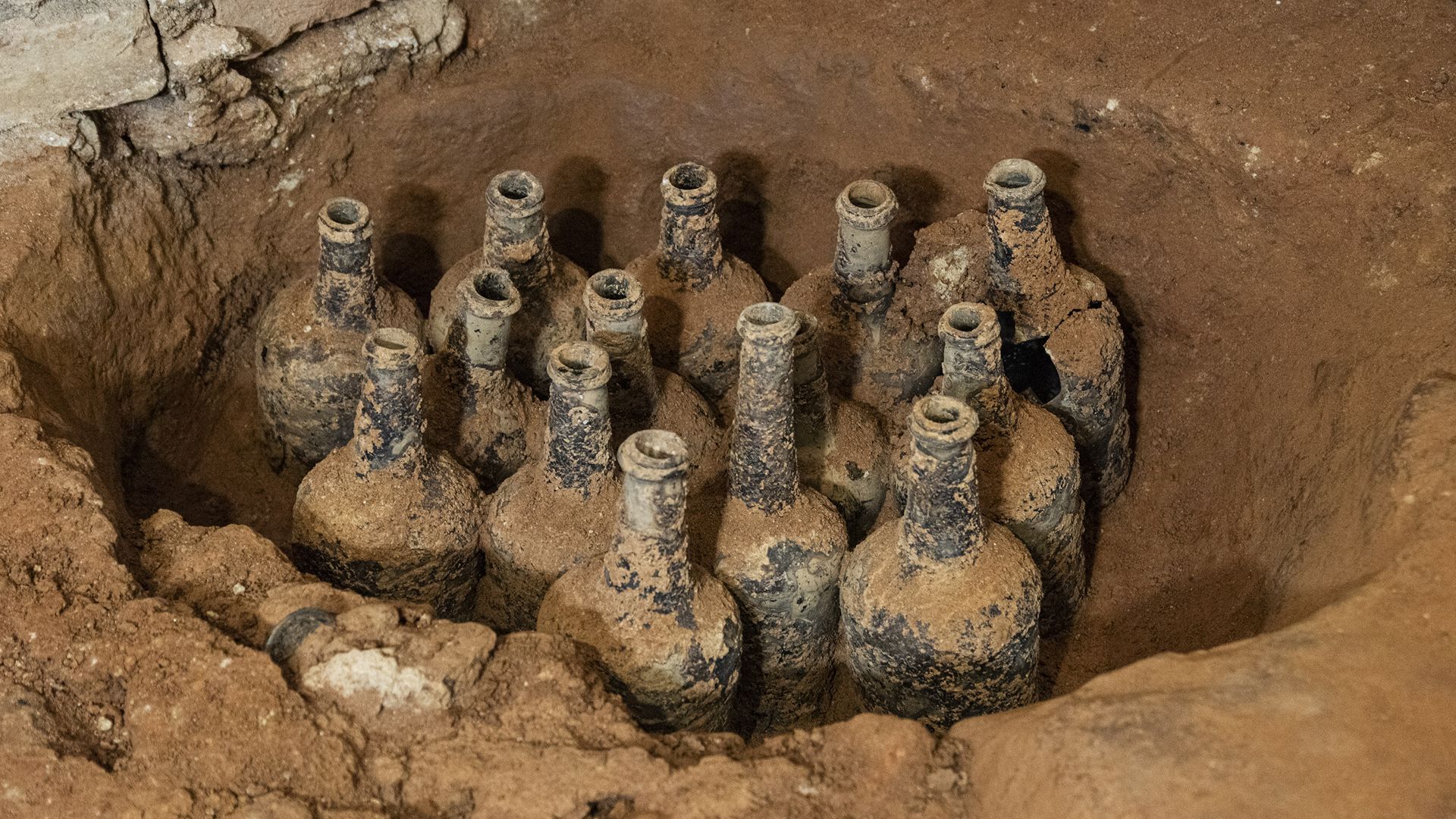The discovery of a batch of 18th-century glass bottles containing cherries and berries in good condition of preservation could enrich a heritage of diversity valuable also for future varietal innovation.
Archaeologists at George Washington's Mount Vernon have unearthed 35 glass bottles from the 18th century in five storage pits in the cellar of the first president of the United States' mansion. Of the 35 bottles, 29 are intact and contain cherries and berries (probably gooseberries and currants) perfectly preserved.
The contents of each bottle have been carefully extracted, are under refrigeration at Mount Vernon, and will undergo scientific analysis. The bottles are currently drying in the Mount Vernon archaeology lab and will be sent off-site for conservation.
This discovery follows the recent find in the cellar of two intact European-manufactured 18th-century glass bottles containing liquid, cherries, and pits. These archaeological finds are part of the significant privately funded $40 million (approximately €37 million) Mansion Revitalization Project at George Washington's Mount Vernon.

Statements on the Discovery
"Never in our wildest dreams did we imagine such a spectacular archaeological discovery," said Doug Bradburn, President & CEO of Mount Vernon. "We were ecstatic last month when we uncovered two fully intact 18th-century bottles containing biological matter. Now we know those bottles were just the beginning of this extraordinary discovery.
As far as we know, this is an unprecedented find and nothing so vast and significant has ever been excavated in North America. We now possess a wealth of artifacts and materials to analyze that could provide a powerful glimpse into the origins of our nation, and we are crossing our fingers that the cherry pits discovered will be viable for future germination. It's so appropriate that these bottles were discovered just before the 250th anniversary of the United States," Bradburn added.
"These artifacts probably haven't seen the light of day since before the American Revolution, perhaps forgotten when George Washington left Mount Vernon to take command of the Continental Army. This means the bottles are extremely fragile and require the utmost care.
The Mount Vernon Ladies' Association was America's first historic preservation organization, so it's only fitting that such a notable discovery was made here at Mount Vernon. We are fortunate to have top archaeologists and historic preservation experts on staff who know how to effectively manage, analyze, and care for this extraordinary discovery.
The Contribution of the Discovery to Historical Knowledge
Jason Boroughs, principal archaeologist at Mount Vernon, said, "These extraordinary discoveries continue to astonish us. These perfectly preserved fruits, picked and prepared more than 250 years ago, offer an incredibly rare opportunity to contribute to our knowledge of the 18th-century environment, plantation foodways, and the origins of American cuisine.

The bottles and their contents are a testament to the knowledge and skill of the enslaved people who managed the food preparation from tree to table, including Doll, the cook brought to Mount Vernon by Martha Washington in 1759 and charged with overseeing the estate's kitchen."
Mount Vernon has partnered with the United States Department of Agriculture, Agricultural Research Service (ARS), to analyze the contents of these historic bottles, composed of materials and foods that are probably 250 years old. Although only a small amount of the samples has been analyzed to date, the findings are significant even at this early stage:
- So far, 54 cherry pits and 23 stems have been identified, suggesting that the bottles were probably full of cherries before bottling. Cherry pulp is also present.
- Microscopy suggests that the cherries may have been harvested by snipping from trees with shears. The stems were neatly cut and purposefully left attached to the fruit before bottling.
- The cherries are likely of a tart variety, which has a more acidic composition that may have helped in preservation.
- The cherries are likely candidates for DNA extraction, which could be compared against a database of heirloom varieties to determine the precise species.










